Every once in a while, back in a year called 2019, I’d run off every few weeks or so and spend time in a VR headset, or peek at some augmented reality device. I’d come back from demos imagining a world lived virtually. With all the pieces in play from so many companies, it seemed like the possibilities were almost here. In fact, at the beginning of 2020, I had a demo with one company, Spatial, imagining the future of remote work in augmented reality using smartglasses that made coworkers seem projected all around me. Seemed like science fiction at the time.
Then 2020 happened.
On my last day in the office in 2020, I was attempting to film a video for Valve’s upcoming VR game Half-Life: Alyx. I was setting up VR equipment in our studio. Then I realized, with rising COVID-19 cases everywhere, I’d better start working from home. I packed some gear in my bag. That was March 9, 2020.
Like an episode of The Twilight Zone, I was granted the dark wish of discovering what a world lived remotely, connecting only through tech, would be like. The answer: It isn’t fun. While being at home has forced me into new workflows, discovering new types of art, and able to set up elaborate VR play spaces in my own house, it was disruptive. And scary. And time just completely melted away.
When I look back at 2020, I’ll always call it My Virtual Year. I haven’t been to stores since March. I haven’t been to museums. I haven’t been to restaurants. I haven’t seen friends, or family, except for a few hours here and there, separated by masks and distance. I haven’t flown since last January. But I’ve been casting myself everywhere. Shooting videos from my living room; livestreaming for tech events; product reviews from my backyard. Always just me, and the people I connect with on my screens. I’ve been on the holodeck, permanently.
I get restless. I get panicked. Sometimes I settle back in. I lose sense of time. Reading books helps. Hugging my family helps. But also, sometimes, connecting virtually with others helps. It’s all worked, in some ways, a lot better than I expected. And a lot worse.
It’s given me a totally new perspective on what we lost in 2020, and what tech didn’t completely provide. But it also showed me so many glimpses of what’s possible on the other side. This virtual year was the doorway to what I think will end up being many half-virtual years to come.
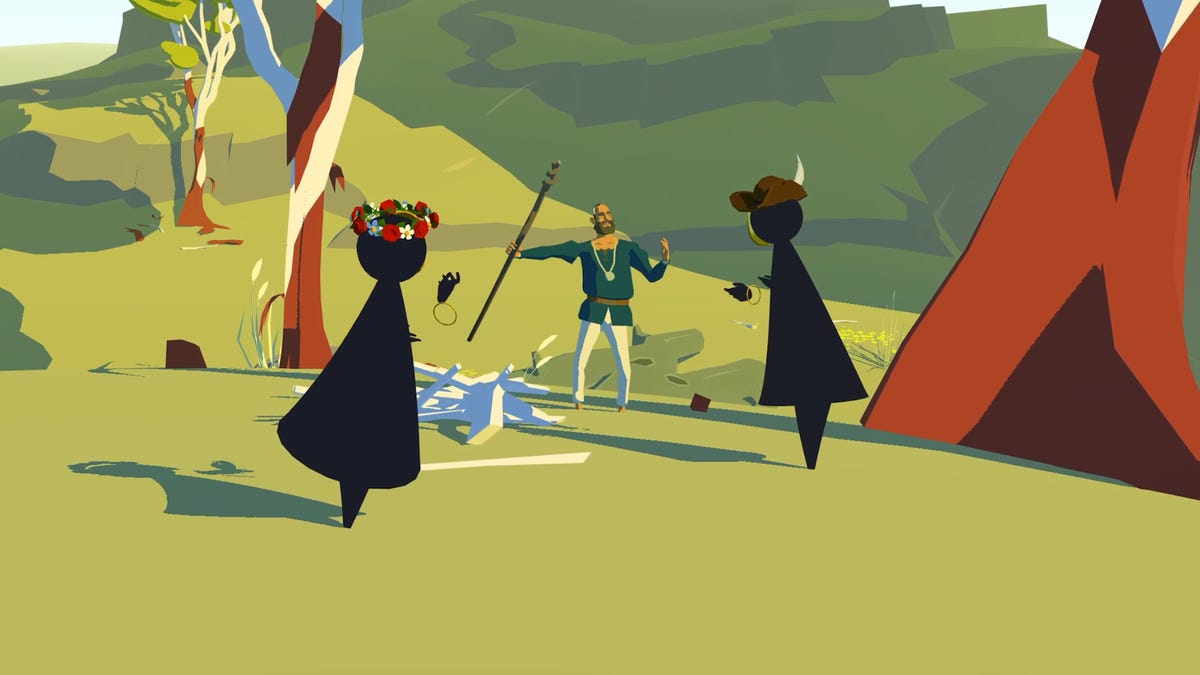

The Tempest, a VR theater experience that was on Oculus Quest this summer.
Tender Claws
VR started to creep into my everyday life
Virtual reality never became the hero to fix everyone’s communication problems. Instead, Zoom swooped in. But at the end of 2020, I know people who have actually bought Oculus Quest 2 VR headsets. I no longer feel like my interest in VR is on a total island removed from everyone else I know. Like the first smartwatches, there’s starting to be a bit of overlap.
The Oculus Quest, and Quest 2, have been my companions all year long. I’ve tested new games, demoed new worlds, briefed on new products, attended experimental theater pieces, and increasingly, I’ve been exercising with it nearly every day. I play Beat Saber as a meditative escape, and the headset’s added fitness tracker mode is starting to become like a floating workout space.
I don’t use VR all the time, and I keep it in my office. But I dip in and out, curious what I can see next, what experiments will show me what’s possible. I tried working in VR, casting all my laptop monitors into my heads-on screen. That’s not quite ready for prime time yet. (But it’s getting closer.)
Visionaries like Facebook’s Michael Abrash see a big future in which VR will be our extended workspace. Business-targeted VR headsets with incredible resolution promise the same. It hasn’t happened yet, but devices like the Quest 2 are far closer to being the accessories that could live in that world.
Meanwhile, PC VR kept slowly evolving, but not very much. Games like Star Wars Squadrons and Half-Life: Alyx — which our sister site GameSpot honored as Game of the Year 2020 — are fantastic, but the cables, setup and high prices of PC VR gear still make it feel like a weird niche hobby. I expect more headsets will connect cheaply and wirelessly, things like the Quest 2, and more.
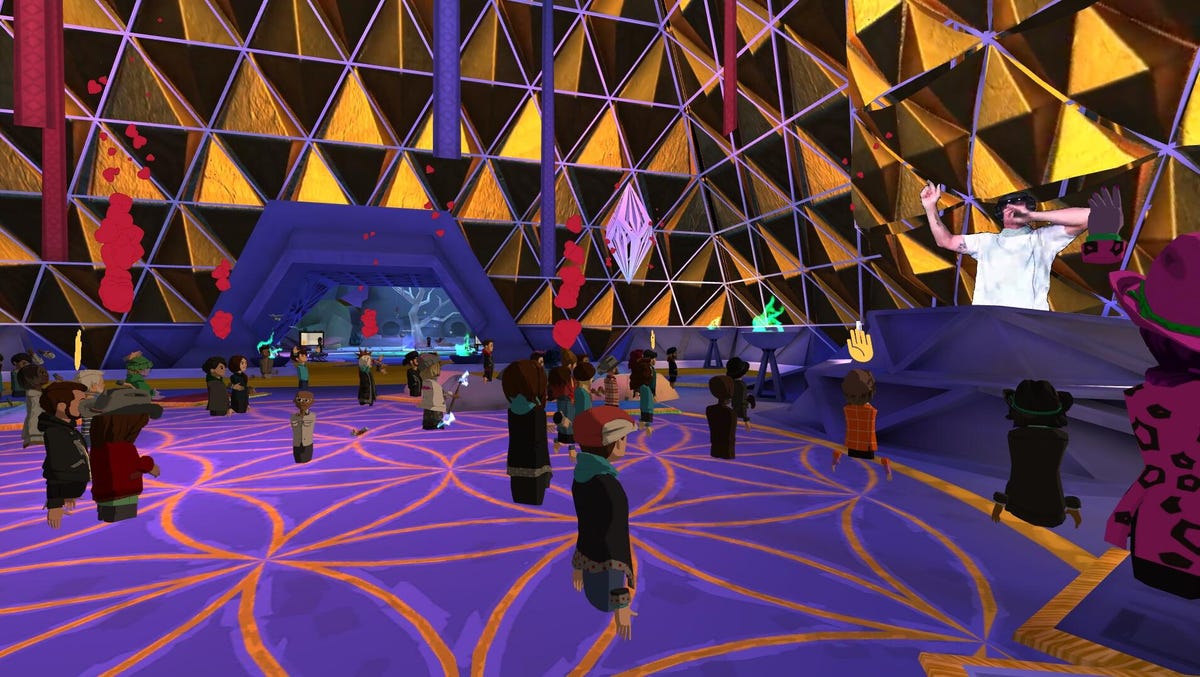

A virtual concert in Burning Man on AltspaceVR this year, with Diplo showing up as a holographic scan.
Microsoft
I went places in VR, almost
I saw the world of theater and live events slowly try to adjust to everyone being at home. The results were mixed. Some VR festivals had virtual screening rooms, and I had an amazing time exploring museum-like gallery spaces and seeing incredible experiences.
I never went to Burning Man before, but I did this year, putting on a Quest headset and entering a galaxy of virtual art spaces in an app called Altspace VR. I saw a concert with Diplo, where he performed as a projected scan of himself in a crowd of cartoon people. I wandered out into the desert and floated into the air and saw massive, temple-like structures. I met briefly with friends.
VR theater pieces like escape rooms and an adaptation of The Tempest took me away from my home and my life, for an hour or so. Actors learning to work in VR led to some wild experiments. Some, like a multinight performance in VRChat created around the HBO show Lovecraft Country, were inspired but suffered from broken tools and laggy interfaces. I took part in an experimental VR theater show in VRChat called Finding Pandora X that made me part of a Greek chorus. Some of these moments felt captured in a special space, but all of them lacked real faces and eyes. In these VR worlds I was just a cartoon among cartoons.
But sometimes it felt like a sacred space. My nephew got a Quest 2 and he asked me to play games with him, so I bought him a cooking game called Cookout. We joined up and made sandwiches, and talked. We were avatars, and I couldn’t see his face. But it was like we were hanging out together, for a little while.
I’d hoped to go to Disney this year, one of dozens of canceled plans. Instead of seeing Star Wars Galaxy’s Edge in person, I tried ILMxLab’s VR experience set in Batuu. It sometimes feels like a theme park, and at moments its incredible detail made me feel transported somewhere else. But it’s more video game than park substitute. And it sometimes made me feel sadder about the real trips I’ve missed.
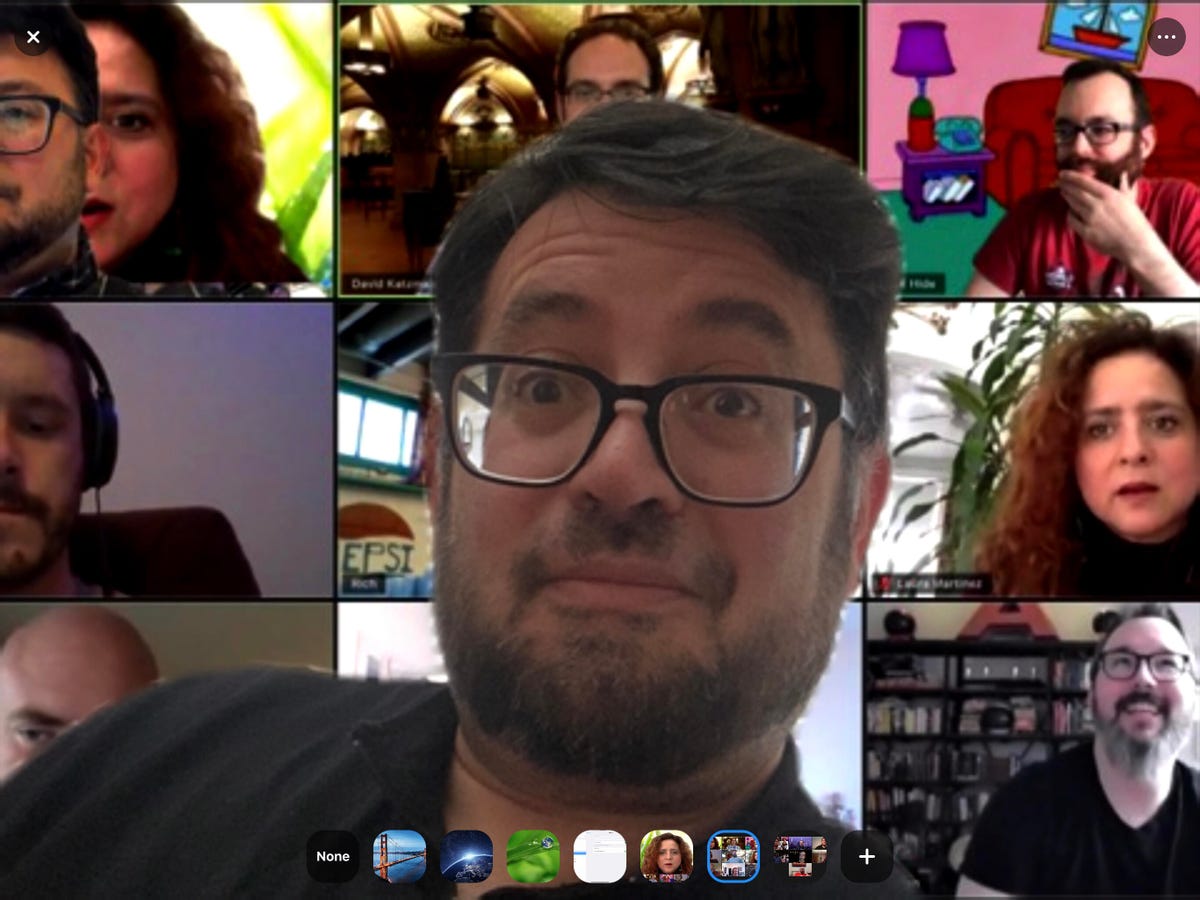

Zoom selfie, spring. It never got that much better.
Scott Stein/CNET
Our chat tools are evolving, but still broken
All. Day. Zoom. My kids on their remote schooling sessions, me at work, weekly chats with friends, and to relax, tickets to virtual theater experiences that also take place… on Zoom. This Full Zoom Year has gotten all of us a lot more familiar with screen-sharing, virtual backgrounds and the importance of mute buttons. But the awkwardness of it all never really went away.
Most of my time wasn’t in VR: it was in various calls, video chats, AirPods in, iPad on, laptop swap, grabbing the right microphone, leaning over a camera.
I remember my meeting with Microsoft, discussing its Teams app experiment of putting people into virtual classrooms and auditoriums. That was months and months ago, and really, nothing much has changed in my life since then. I found my necessary tools, settled in and survived. But I can’t say my workflow changed much after that. Microsoft’s evolving idea of video chat is a unique idea, but other apps didn’t seem to evolve fast enough for anyone’s needs. We used what worked.
Change is hard. But we’ve all had to do it. I learned new tools and set up home offices and classrooms, and upgraded my wireless network with an Eero mesh router (which I’m still not sure I set up right).
I usually just settle down by my same window or blank wall, connect and do my best. It’s not a perfect situation. I’d prefer apps that more easily blend and blur my background, and devices with much better cameras: Laptops are disappointing but well-placed; iPads are good but the camera’s too shifted to one side.
My favorite Zoom moments? A virtual Passover seder with my family. My weekly friend and work “drinks” days. A Zoom magic show at the Geffen Playhouse, called The Future, that involved props sent to me that I took out and used with the magician. Also, a puzzle-solving magic night called Inside The Box. Many of the others blur together.
I’d love for VR or future AR glasses to blend these Zooms into something more immersive. I could sit across from colleagues, or see my Mom next to me. VR headsets are magical, but are limited-use, don’t connect to my Google and Apple apps, and are better suited right now for quick-dive nonrealistic things like games or art, or things where I’m trying to detach from everything else and immerse by myself for a bit.
The promises of augmented reality keep growing, but the road to glasses is going to take a long time. Longer than this lockdown. There are apps that hint at what blending Zooms with 3D space will feel like, but they’re totally experimental now. So far, my home life and my virtual lives have remained separate for the most part, except for clever games like Mario Kart Live Home Circuit, which let me shrink down and race through my cluttered home, or AirPods, which help me listen in on calls while making lunch for my kids.
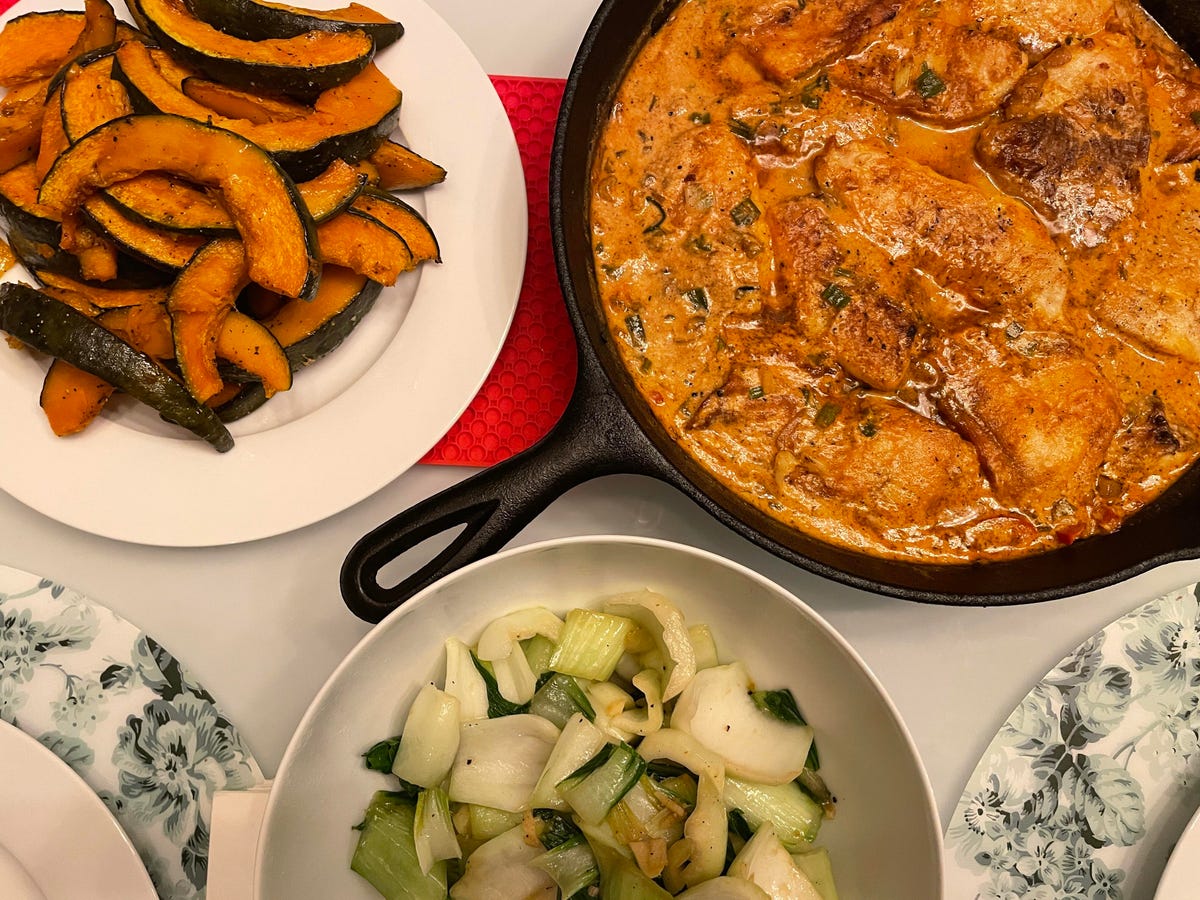

Not tech at all. Just one of my 1 million food photos.
Scott Stein/CNET
My favorite moments of this year weren’t really tech at all
The more I spent apart from real people, and only connecting online, the more I felt a strange panic at times. Did people know where I was? Did anyone share my feelings? Was I alone? Sometimes I’d feel anger, and resentment. Then I’d feel appreciative for what I had. The feelings fluctuated. I talked to a therapist. I tried to meditate.
I like cooking. Simple cleaning food, prepping, chopping. Doing dishes. Making things. Frying eggs. It makes the kids happy. I feel like I’ve made something real happen.
I like practicing magic. I do it once in a while, shuffling cards, trying a new coin move. Reading a book that can challenge my idea of how to perform. I like the way my hands can subtly move, with more nuance than any VR controller or computer keyboard.
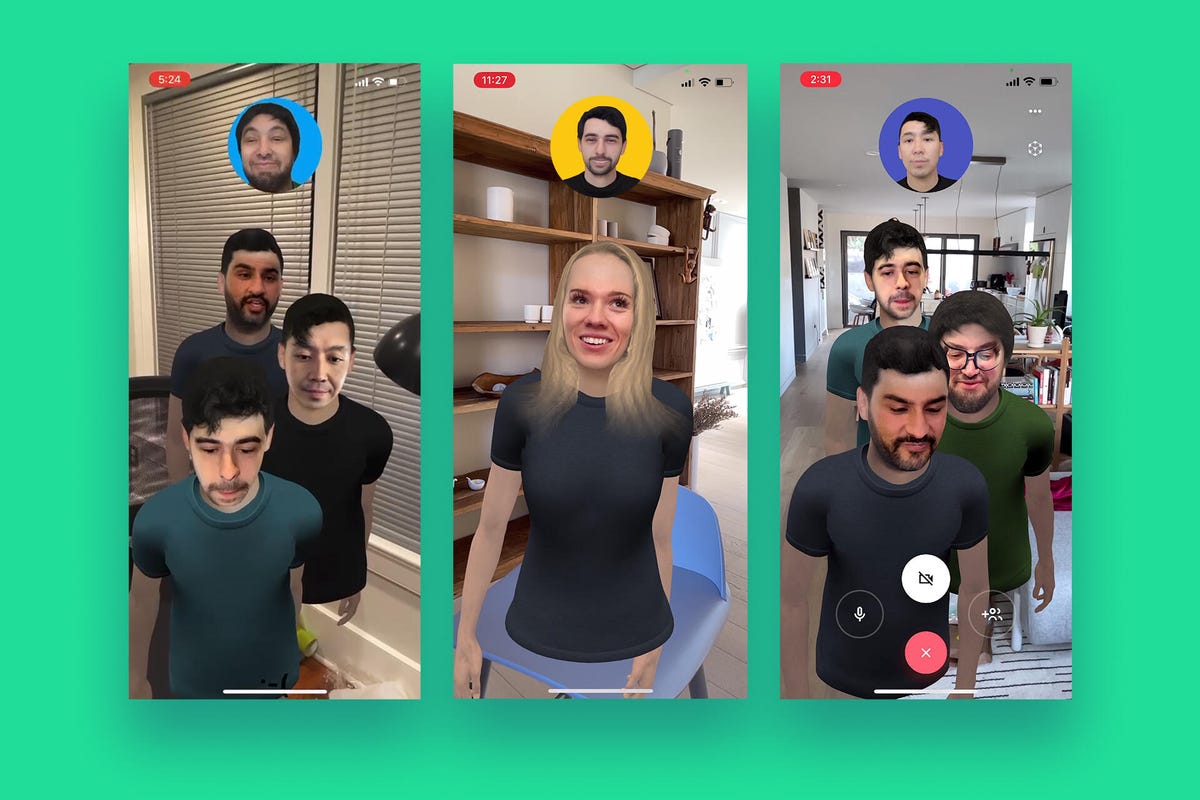

Tele blends avatars and real faces in a chat app. Expect more of this.
Spatial
The future needs to glue my worlds together
Time accelerated, all of a sudden, from all this time in one place. The year ended. I wonder where it went. I’m sitting at home again, for another holiday where I’m not going anywhere. Hoping that the future, sometime soon, can be different for us.
I see my kids hopping in and out of virtual classes, jumping upstairs to play online games with friends, and they’ve found some sort of pattern. But it doesn’t replace what we lost.
My work from home, my connection with others remotely, doesn’t replace what I’ve lost, either.
But there are ways all of these tools could expand the idea of how to connect. This year was a terrible pop-quiz field test of all of our VR, AR, remote connecting, gaming and online tools, and for me they earned a passing grade. But no one came close to acing anything. The very best I got was stuff that did well enough, worked without breaking, entertained and connected for a bit.
VR doesn’t know how to connect to the rest of my work apps and life yet. All my screens help me stay informed, but they tire me out.
In the corners, there were immersive shows I went to that were full of creativity, brilliant ideas, hopes and dreams. I think there’s a world ahead where those ideas could expand, with better tech, and just as extensions of live events and in-person experiences that we’ll finally get to go back to again, someday.
Looking forward, 2021 and onwards might move on from this Virtual Year, but I don’t think the tech experiments will go away. We laid a backbone for how a whole generation will connect to experiences together. Right now, it’s a mess. In time, it’ll probably get better. Every tech company got to see firsthand how their attempts at connection and community succeeded, and failed. I expect 2021 to be overflowing with promised solutions to our 2020 headaches. And whether it’s a headset, or a phone, or a laptop, or a router, or something else entirely weird and new.
But all the tech in the world can’t allow me to hug my mom again. Not yet, at least.




